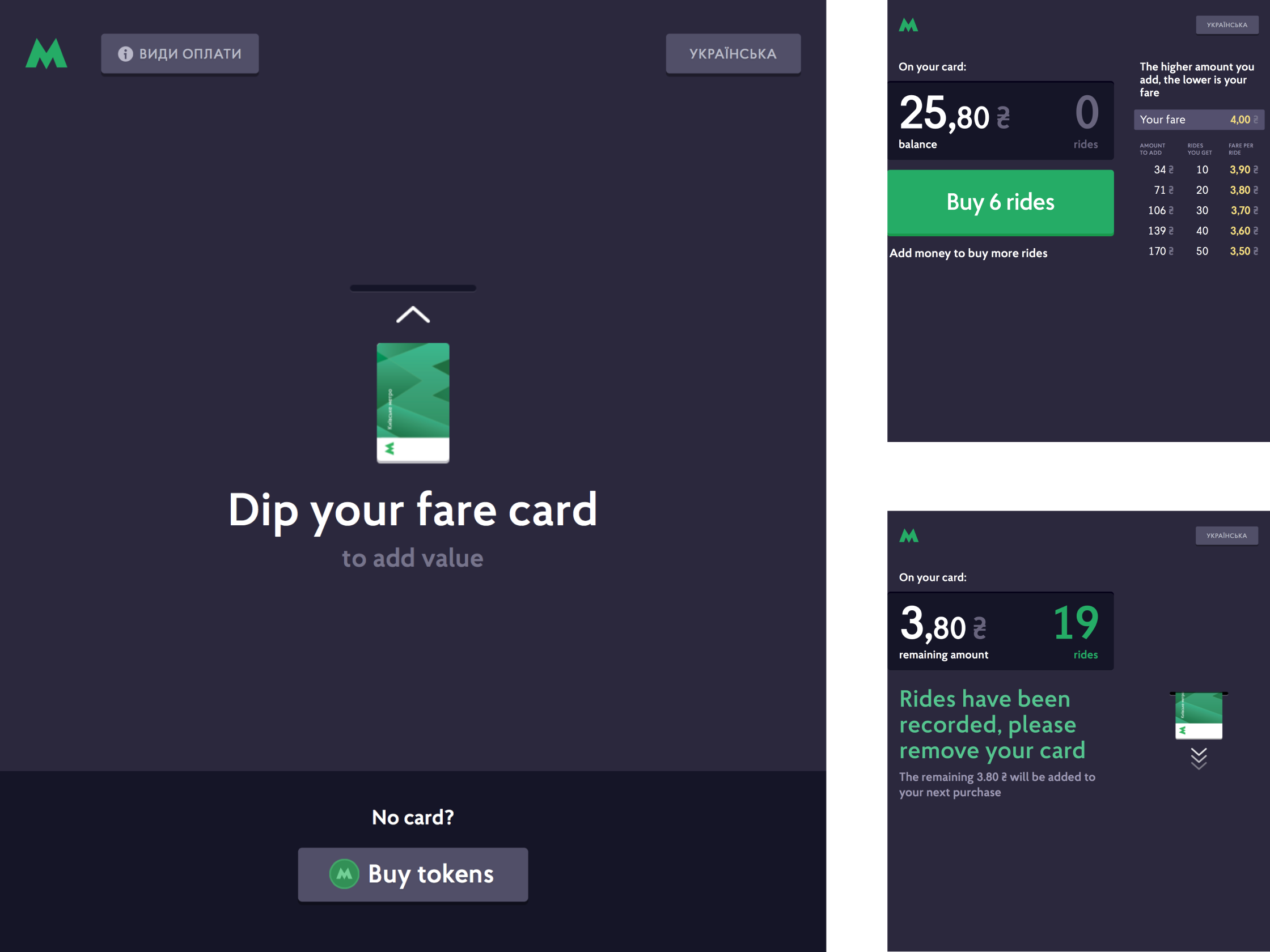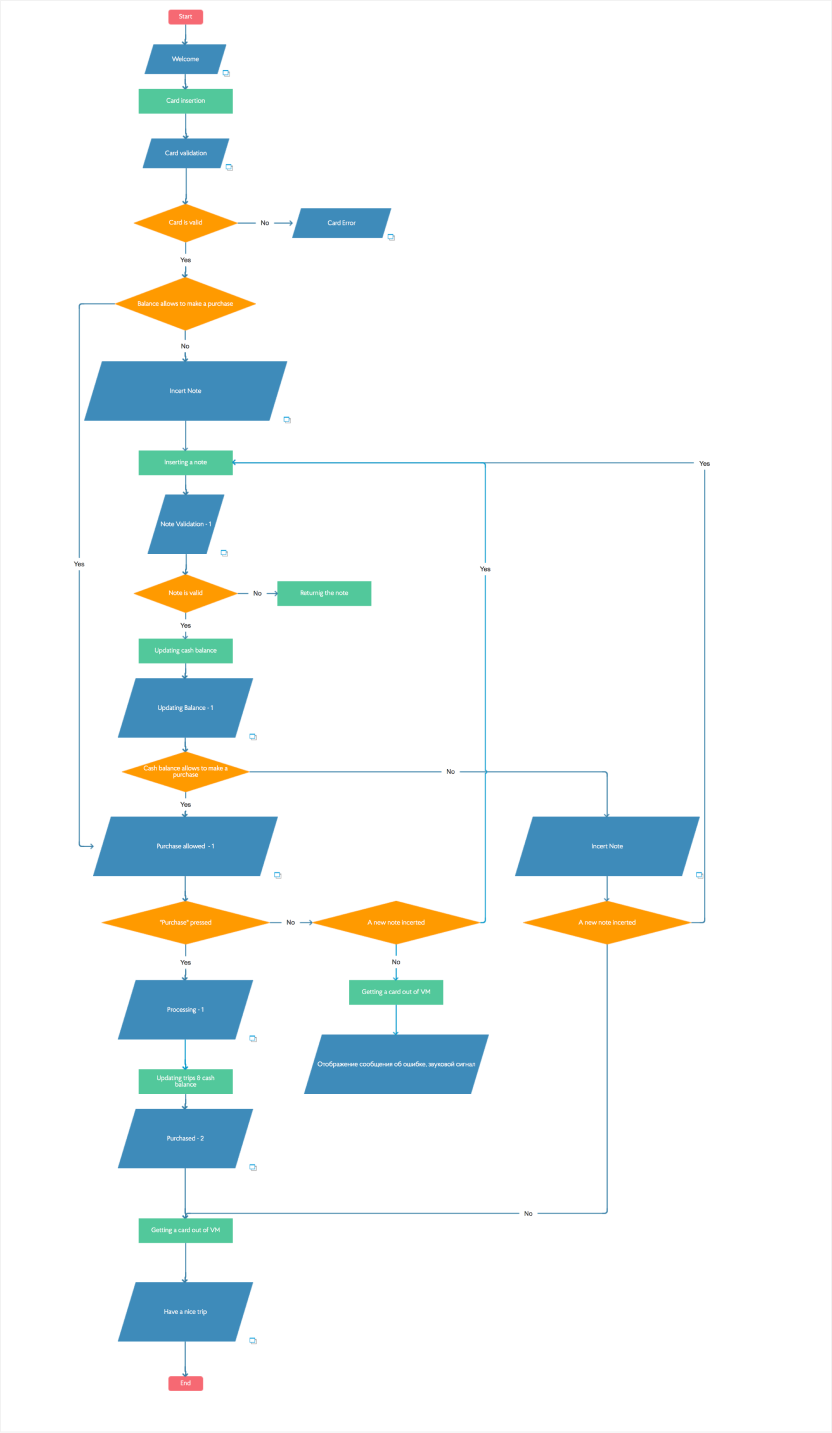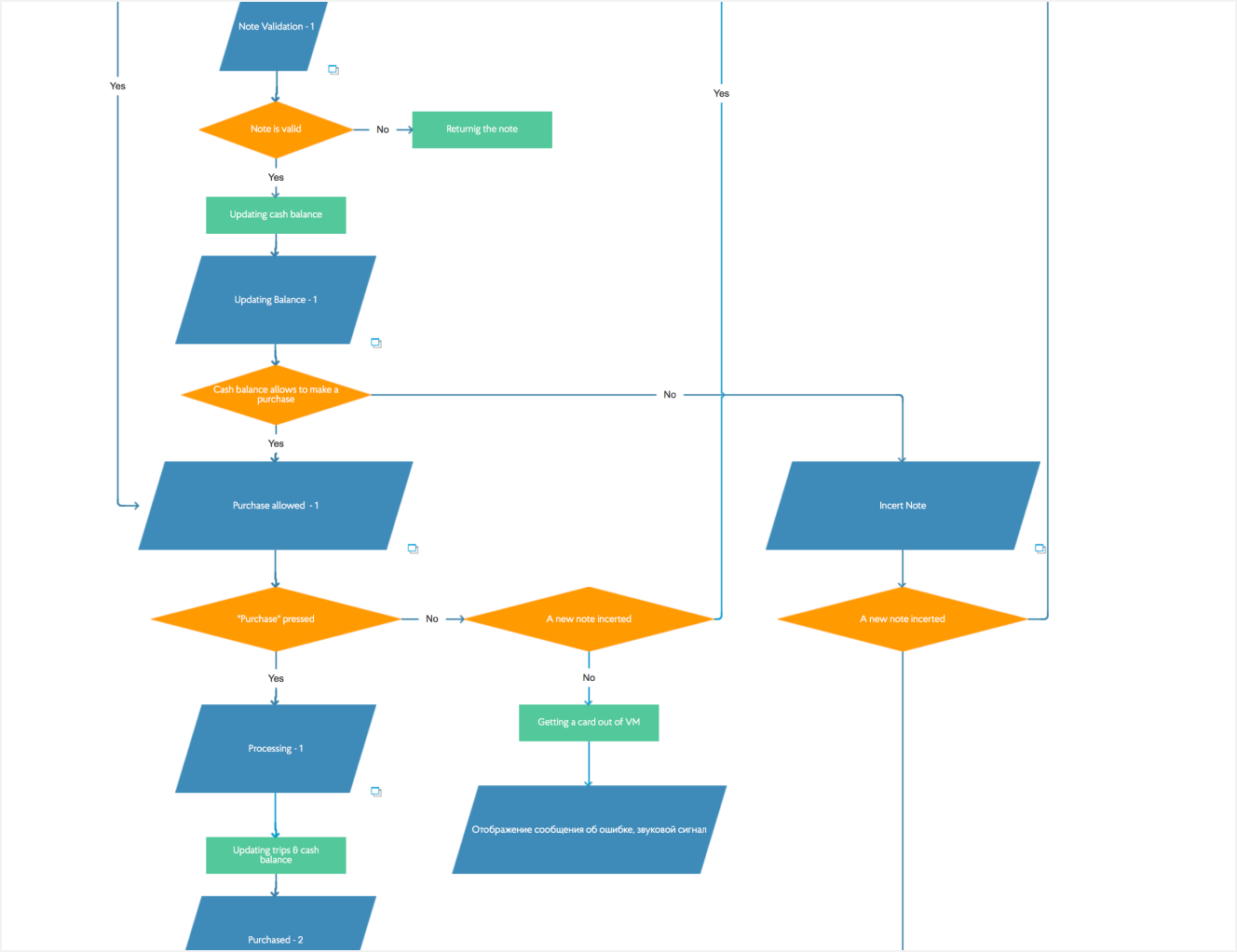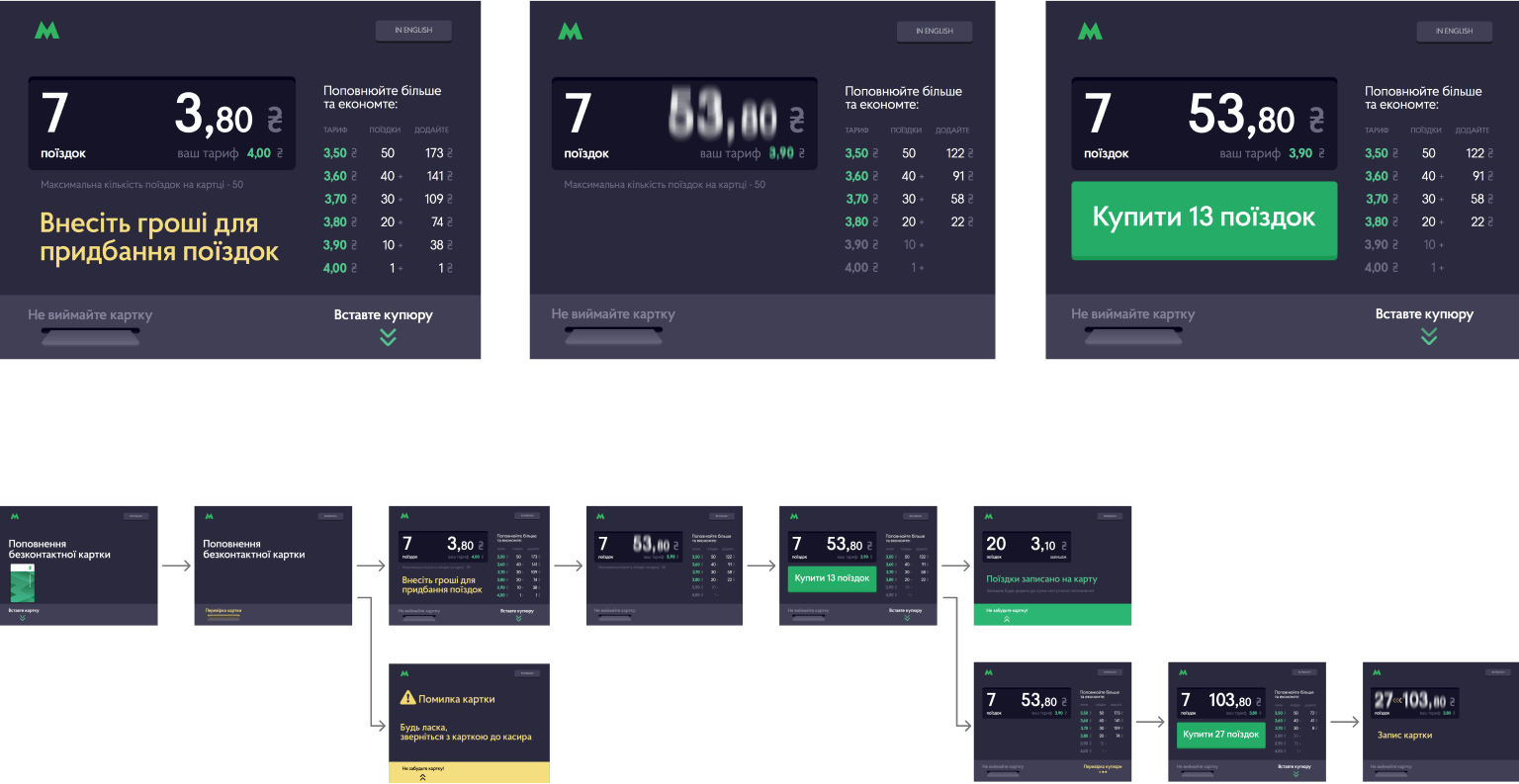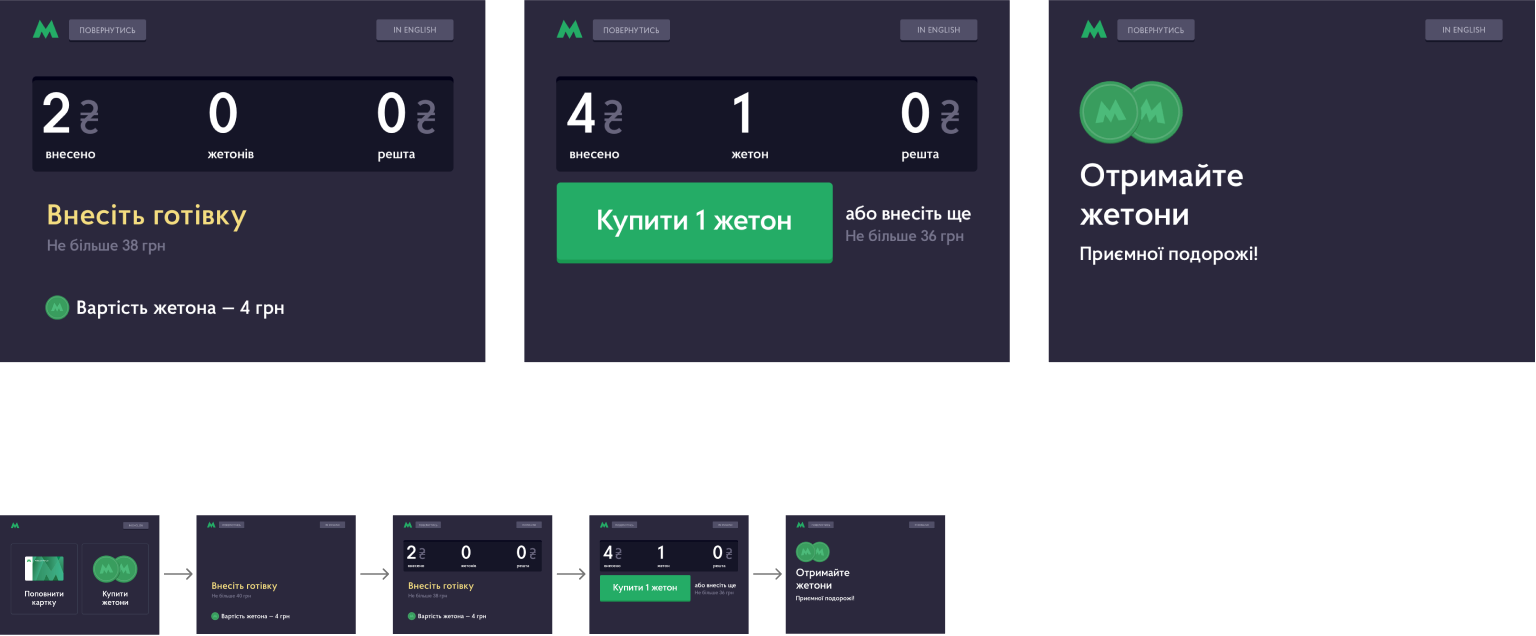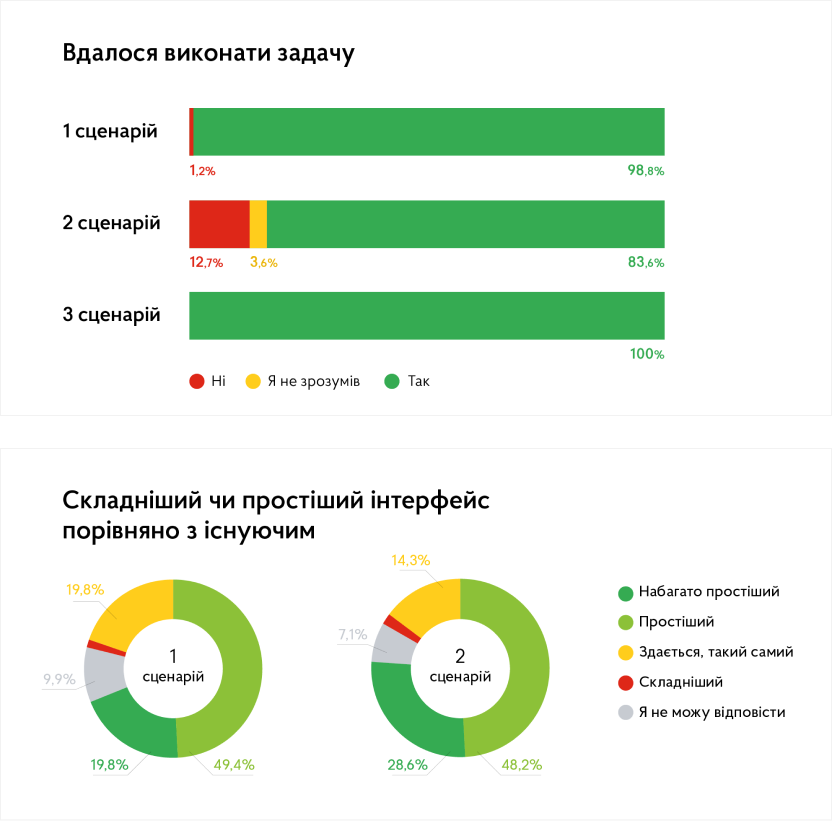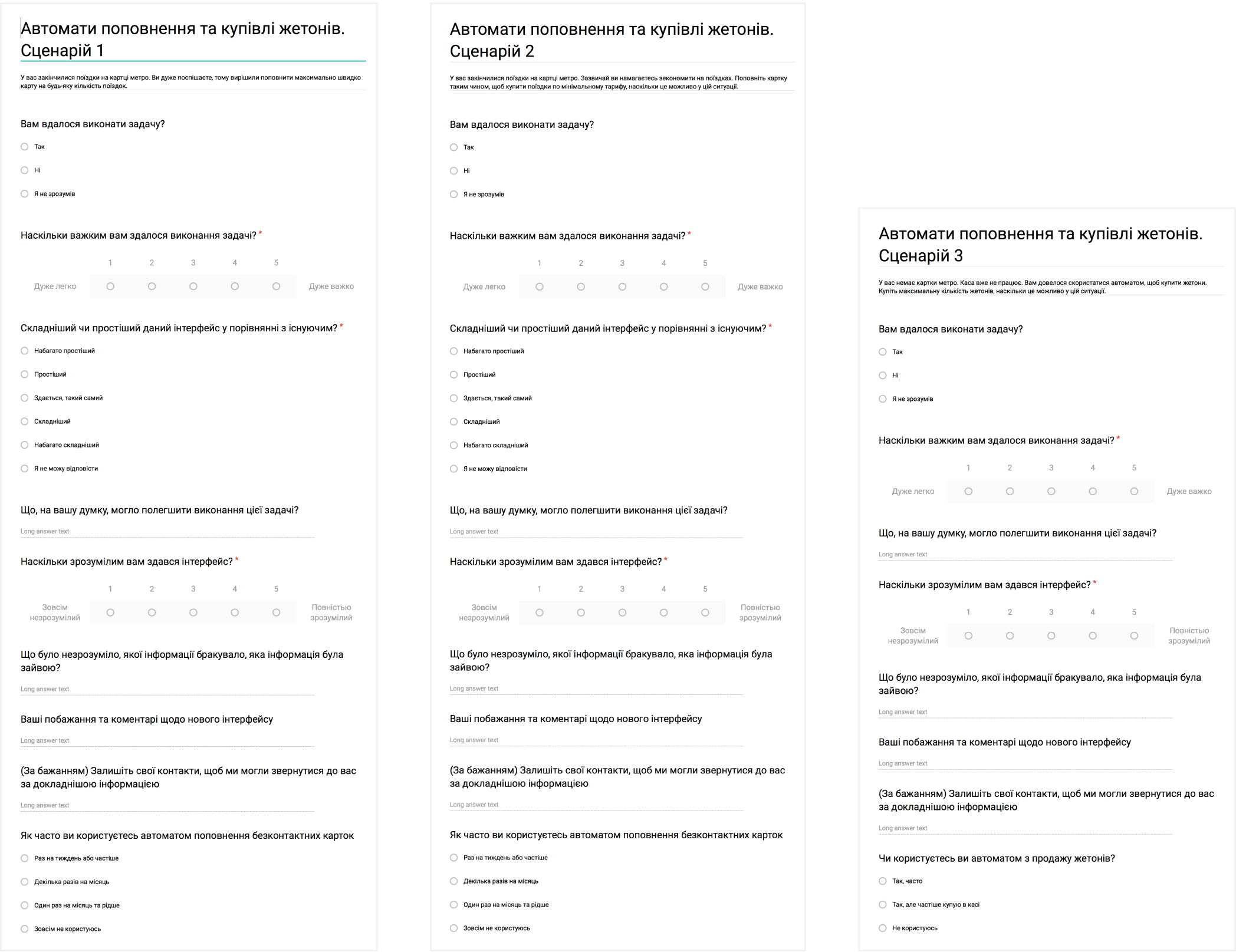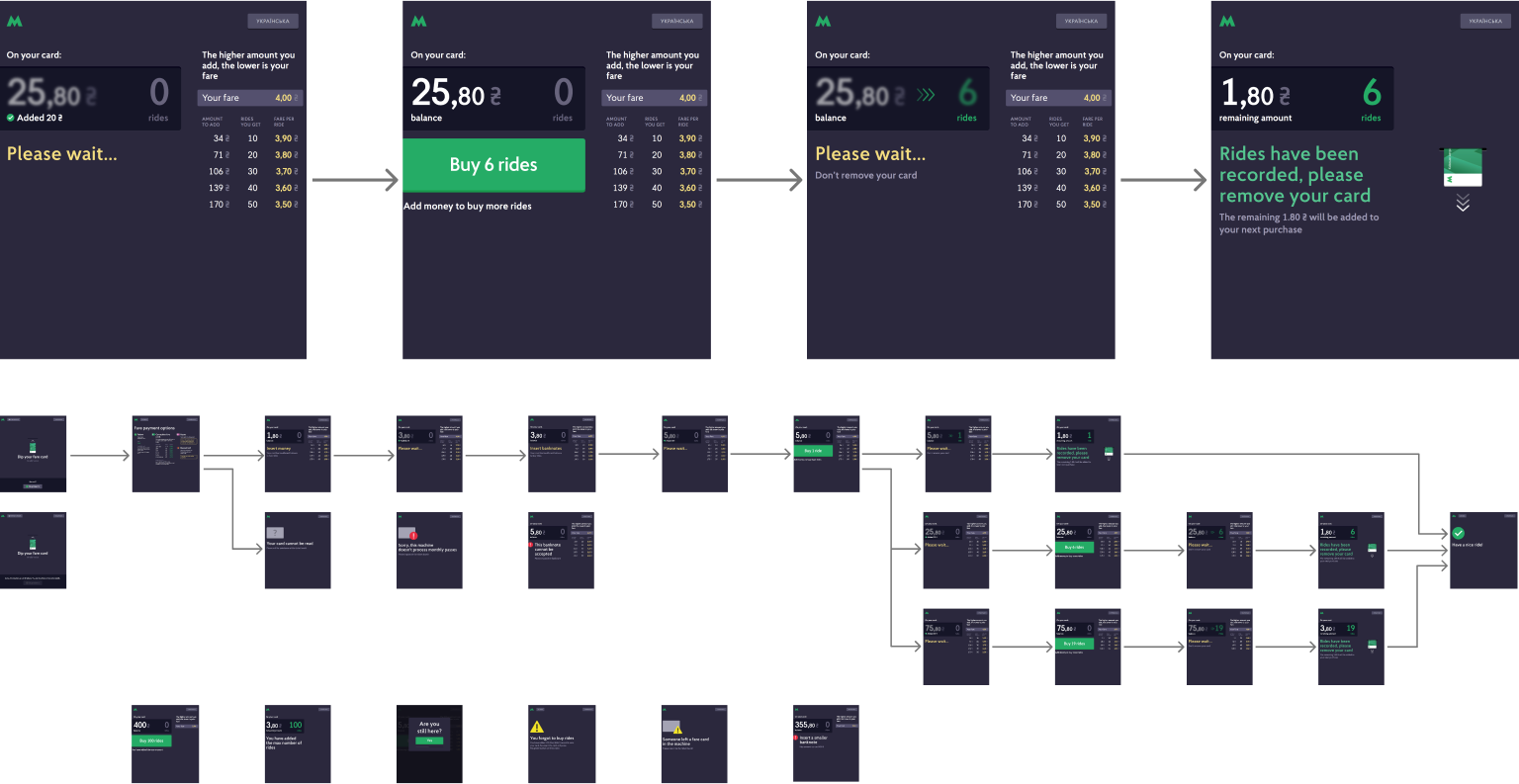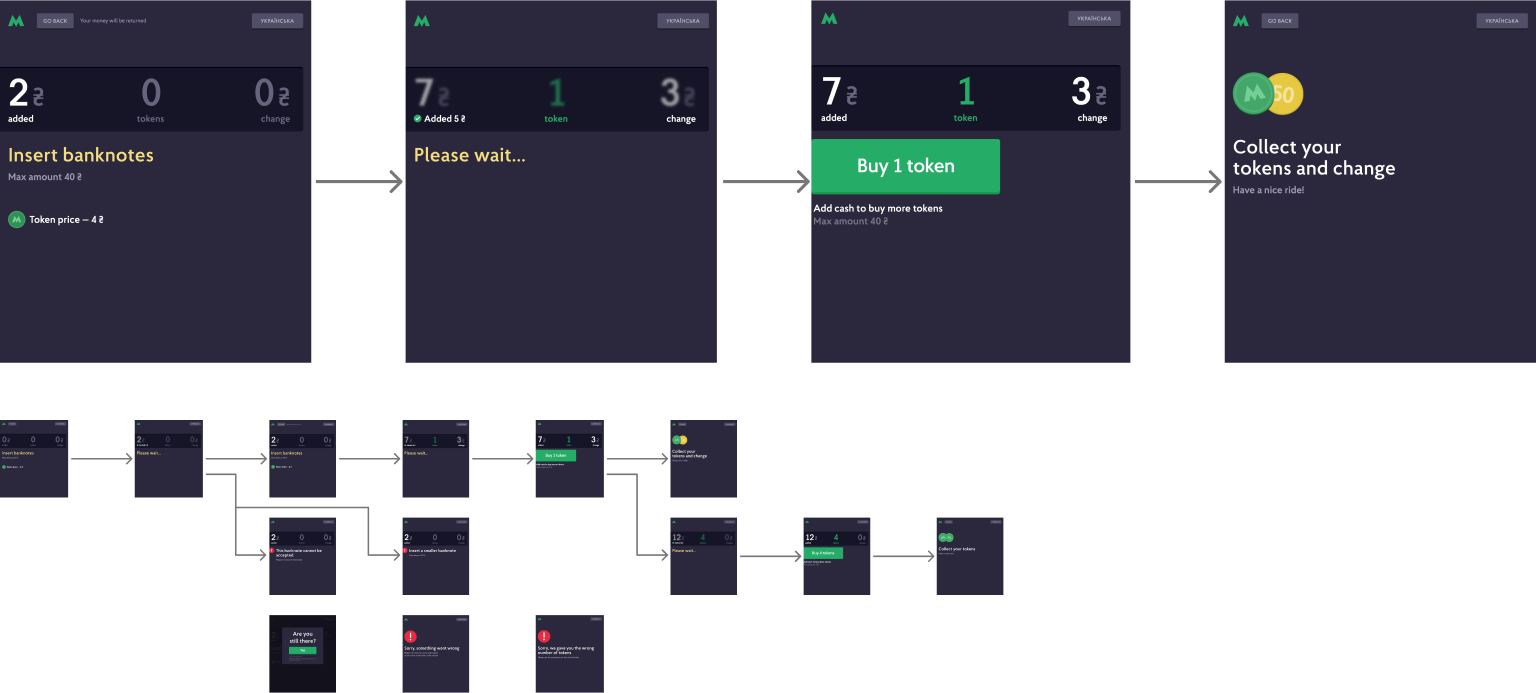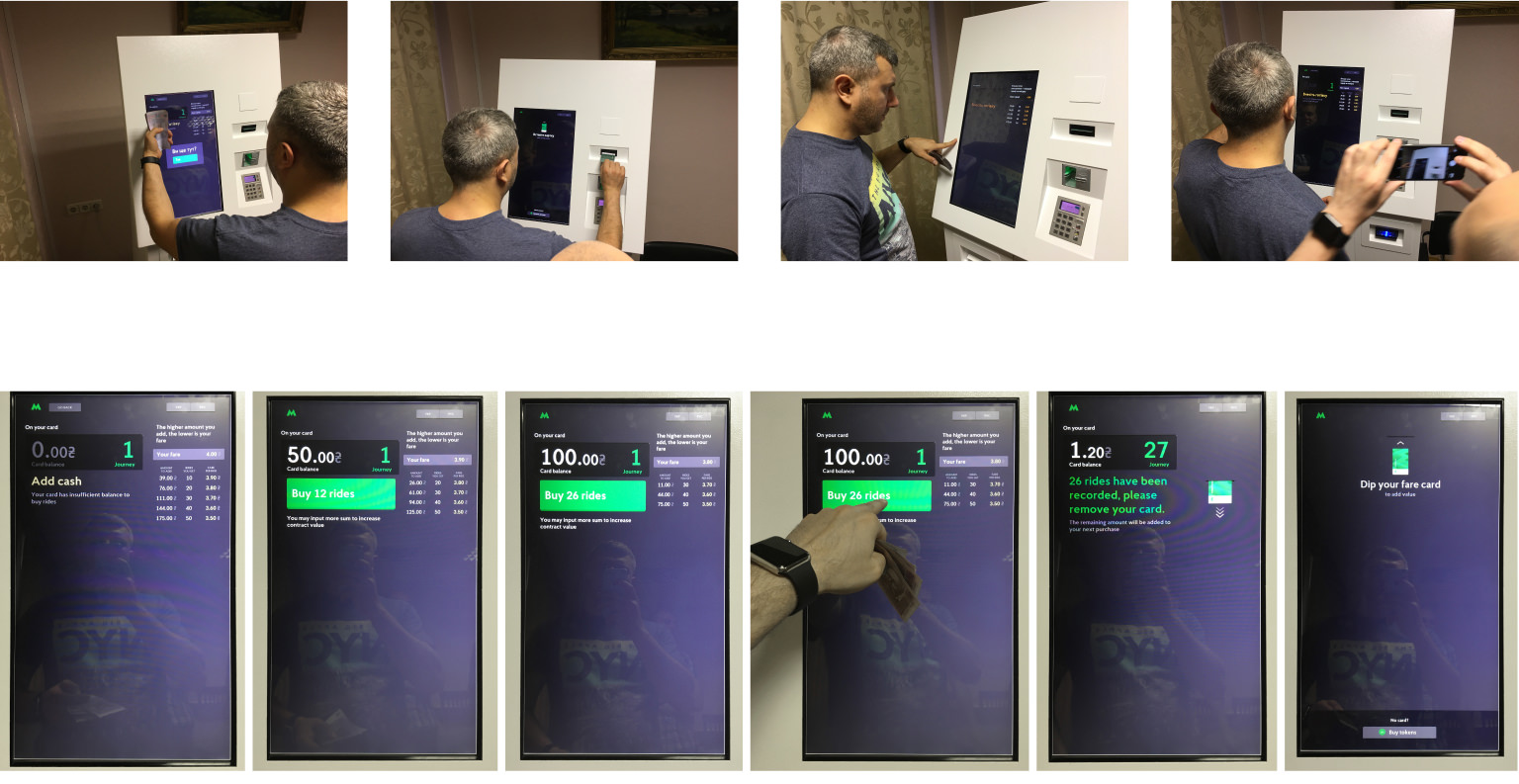Fare Card & Token Vending Machine
KYIV METRO
The Kyiv Metro is a rapid transit system that is the mainstay of Kiev’s public transport. Daily ridership – 1.32 million (2016), annual ridership 484.56 million (2016)
PROJECT ROLES
UX/UI Designer
YEAR
2015
PROJECT GOAL
Reduce checkout lines, simplify and speed up the process of purchase tokens and rides with fare cards
CHALLENGES
The fare card has two memory slots: monetary balance & rides balance, a user has to refill monetary balance before purchasing rides. The ride price depends on the number of rides user purchases (the higher amount of rides user purchases - the lower is the fare). Both memory slots have a max amount of restrictions (200UAH and 50 rides). There are additional restrictions on the bills that the vending machine is able to validate. The devices themselves should be easily montaged in places with a vast variety of lighting conditions.
IMPACT
As a UX/UI designer teamed with a multidisciplinary team of designers, created an application concept. Lo & Hi-fidelity prototypes were tested during user testing sessions to proof a design concept. The developed version was tested on a production ready vending machine hardware.
TESTING VENDING MACHINE PROTOTYPE
Testing on a production-ready device showed that some updates on colors and brightness are required.
